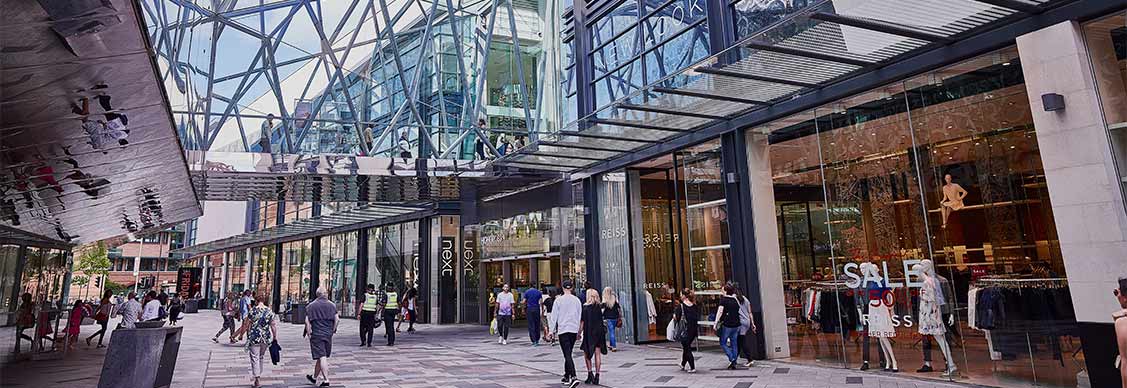Why schools are moving into shopping centres
As retail shifts to meet new consumer demands, schools are filling the gaps
Local malls are famously popular hangouts for students after the final school bell sounds.
But for some students, travelling to one is no longer necessary. Following a trend that kicked off in the U.S., schools have been moving into shopping centres from Australia to Hong Kong, providing new revenue streams at a challenging time for brick-and-mortar retail alongside the opportunity to experiment with a new mix of tenants.
The Imperial Centre in Gosford, New South Wales, in March became the site of ET Australia Secondary College, believed to be Australia’s first school within a retail building.
“When ALDI (supermarket) vacated it was an opportunity for us to find an alternate use for that space, which is approximately 1800 square metres,” says Steven Lacey, CEO of the Lederer Group, which owned the Imperial Centre until its sale to IP Generation recently.
Lederer co-developed the school with ET Australia, a vocational training provider, which wanted to offer high schoolers a more personal style of tuition close to transport and job opportunities. Though this meant seeking re-zoning, the process was quick.
In Hong Kong, where development land is scarce and demand for British-style education is high, two shopping malls have become successful homes to new schools.
Wycombe Abbey School occupies a renovated building in Aberdeen’s Tin Wan Shopping Centre, where it uses the three-storey atrium for a climbing wall. In Tseun Kwan O, the mixed-use Monterey Place houses the Invictus School on the ground floor.
However, it was schools in the U.S. that were first to jump on the idea of repurposing retail space. For example, Vermont’s Burlington High School this year expanded into a former Macy’s store within the downtown mall, while California’s College of the Desert bought an entire abandoned Palm Springs mall in 2018 for US$22 million.
Looking for more insights? Never miss an update.
The latest news, insights and opportunities from global commercial real estate markets straight to your inbox.
Online retail pips demand
The repurposing trend is gathering pace in Australia as department stores in particular look to consolidate their retail space over the next five years, but not as fast as predicted before the pandemic.
This is largely because retailers such as Target and Big W have had a rebound in in-store sales since the national lockdown and are using their store network alongside distribution centres to fulfil online orders This is subsidising their rent.
Department store rent can be as low as A$85-A$120 per square meter a year, rising to A$300 per square meter in some centres, according to JLL.
These could be tempting rates for a school. In 2014 a school in a mall was flagged by Catholic Schools NSW for the high-rise suburb of Parramatta, in Sydney’s west. With school waiting lists blowing out, the group was scouting 7,000 sqm in a shopping centre for possible expansion.
However, schools in Australia are unlikely to appear in, or occupy, shopping centres to the extent they are in the U.S, says Andrew Quillfeldt, JLL’s head of retail research.
“Department stores have performed better in Australia than in other parts of the world, to the extent that we haven’t had any wholesale closures of businesses, so the backfill requirement is less significant,” he says.
For many shopping centres, the owner has the option of carving up a large space for smaller tenants at a significantly higher rental rate, sometimes up to A$1600 per square metre, albeit with a cost to covert the space, Quillfeldt says. “Other conversion opportunities are residential or last-mile distribution, which some major owners are actively pursuing.”
Investment Opportunities
However, he acknowledges that education in a shopping centre does provide diversity of income for the owner and an extra layer of convenience for consumers.
At Forest Hill Chase in Melbourne, a former Big W store is now a childcare centre.
“There are physical requirements, such as open space, but in this case the landlord was happy to accommodate that.”
In Asia, a relatively strong bounce back from COVID-19 together with the culture of visiting malls and the lower ratio of mall space per capita means malls are not so much being repurposed for schools as they are being remixed.
“What we are seeing are major shifts in tenant mix away from traditional retailers who are downsizing due to the continued effect of e-commerce,” says Andrew Macpherson, JLL’s APAC director of asset development. “These retailers are being replaced by experiential retail, medical retail, learning centres and co-working spaces.”
Mall operators are also allocating some areas to cold storage and last-mile distribution, while there is also increased demand for data centre space to support the growth in e-commerce, he adds.
Future’s bright
Meanwhile, looking smart in blue and orange livery, with spacious new classrooms for 300 students, all’s well for ET Australia Secondary College in its retail-oriented home.
There’s a Woolworths, McDonald’s and food court, and it’s just 300 metres from Gosford train station.
“It’s working out very well for the school, and for the centre – there’s lots of foot traffic, which the retailers like,” Lederer’s Lacey says. “And the Central Coast council was happy to work with us.”
Contact Andrew Quillfeldt
Head of retail researchWhat’s your investment ambition?
Uncover opportunities and capital sources all over the world and discover how we can help you achieve your investment goals.




